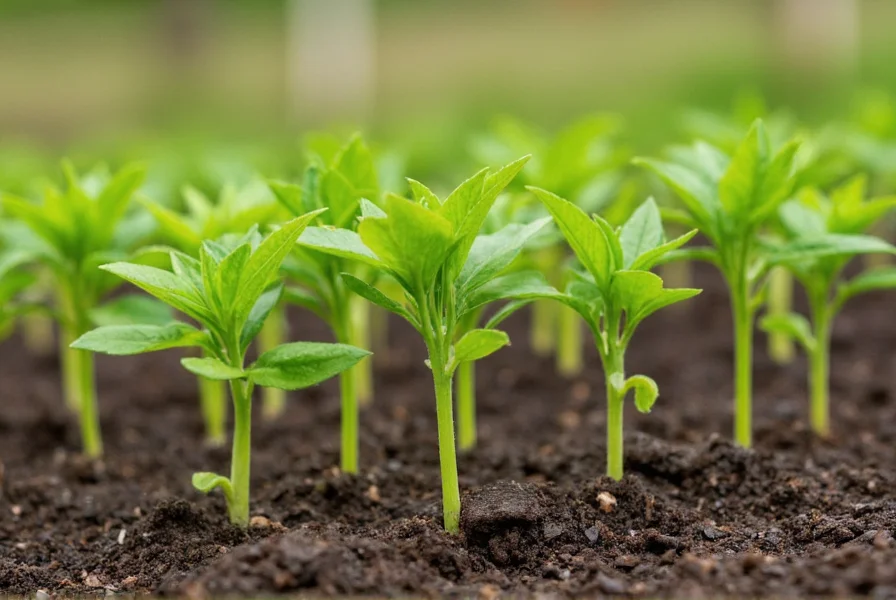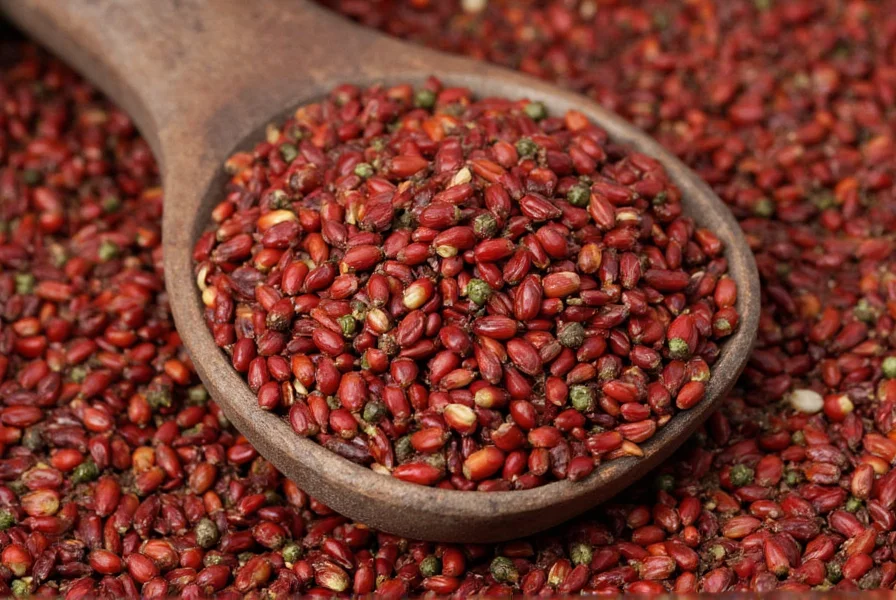For gardeners seeking to expand their chili pepper collection, aji pepper seeds represent an exciting opportunity to cultivate South American heirloom varieties known for their distinctive fruity flavor profiles and moderate heat levels. Unlike common bell peppers or jalapeños, aji peppers (Capsicum baccatum) offer a unique culinary experience with their characteristic citrus notes and complex flavor development throughout the growing season.
Understanding Aji Pepper Varieties
When selecting aji pepper seeds, it's essential to recognize the different cultivars available. The most popular varieties include:
| Variety | Heat Level (Scoville) | Flavor Profile | Maturity Time |
|---|---|---|---|
| Aji Amarillo | 30,000-50,000 | Bright, fruity, tropical | 80-90 days |
| Aji Limon | 30,000-50,000 | Lemon-citrus, floral | 75-85 days |
| Aji Pineapple | 5,000-30,000 | Sweet, tropical fruit | 70-80 days |
| Aji Charapita | 50,000-75,000 | Intense citrus, complex | 90-100 days |
Each variety brings distinct characteristics to your garden and kitchen. Aji amarillo seeds produce peppers that turn from green to vibrant yellow-orange when mature, while aji limon maintains its bright yellow color throughout development. Understanding these differences helps gardeners select the right aji pepper seeds for their climate and culinary preferences.

Optimal Conditions for Germinating Aji Pepper Seeds
Successfully growing aji peppers begins with proper germination techniques. These seeds require warmer temperatures than many common pepper varieties, making them somewhat more challenging for beginners. The ideal conditions for germinating aji pepper seeds include:
- Temperature: Maintain soil temperature between 75-85°F (24-29°C) using a heat mat
- Moisture: Keep soil consistently moist but not waterlogged
- Light: Provide 12-16 hours of bright light once seedlings emerge
- Soil: Use well-draining seed starting mix with pH 6.0-6.8
- Depth: Plant seeds 1/4 inch deep for optimal germination
Many gardeners struggle with aji pepper seeds germination temperature requirements, not realizing these South American natives need consistently warm conditions. Unlike bell peppers that might germinate at lower temperatures, aji varieties often fail to sprout below 70°F (21°C). Using a thermostat-controlled heat mat significantly improves success rates when starting aji pepper seeds indoors.
Transplanting and Garden Preparation
Once your aji pepper seedlings develop their second set of true leaves and outdoor temperatures remain consistently above 60°F (15°C) at night, they're ready for transplanting. Proper garden preparation makes a significant difference in your aji pepper plants' productivity:
Choose a location with full sun exposure (6-8 hours daily) and prepare the soil with organic matter. The best soil for aji pepper cultivation contains ample compost or well-rotted manure to improve drainage while retaining moisture. Raised beds work exceptionally well for growing aji peppers in regions with heavy rainfall, preventing root rot while maintaining the warm soil these plants prefer.
When transplanting, bury the seedlings slightly deeper than their nursery containers, as aji peppers develop roots along their stems. Space plants 18-24 inches apart to ensure adequate air circulation, which helps prevent common fungal issues. Applying a balanced organic fertilizer at transplanting time gives your aji pepper plants the nutritional boost they need during this critical transition period.

Seasonal Care Requirements
Caring for aji pepper plants throughout the growing season requires attention to their specific needs. Unlike some common pepper varieties, aji peppers benefit from consistent moisture without waterlogging. The ideal watering schedule involves:
- Watering deeply 2-3 times weekly rather than daily light watering
- Mulching with organic material to maintain soil moisture
- Reducing water slightly as fruits begin to ripen to intensify flavor
- Avoiding overhead watering to prevent fungal diseases
Fertilization should follow a balanced approach. After the initial transplant feeding, apply a low-nitrogen, high-phosphorus fertilizer every 3-4 weeks to encourage flowering and fruit set. Excessive nitrogen promotes leafy growth at the expense of fruit production, a common mistake when growing aji peppers.
Verified Growth Timeline: Research-Backed Milestones
Field trials from New Mexico State University's Chile Pepper Institute provide scientifically documented growth stages for Capsicum baccatum varieties. This verified timeline helps anticipate critical care windows:
| Growth Stage | Time After Transplanting | Key Development Indicators |
|---|---|---|
| Root Establishment | 0-14 days | New leaf growth begins; root system anchors in soil |
| Vegetative Expansion | 15-45 days | Rapid stem elongation; 12-18" height achieved |
| Floral Initiation | 46-65 days | First flower buds appear; requires consistent moisture |
| Early Fruit Set | 66-80 days | Small peppers form; thin for optimal size development |
| Color Ripening | 81-100+ days | Chlorophyll breaks down; carotenoids develop signature colors |
This progression, documented in the NMSU Extension publication on chile pepper cultivation, confirms that aji varieties require 15-20% longer development than common Capsicum annuum peppers due to their South American tropical adaptation. Temperature fluctuations of ±10°F can extend stages by 7-10 days.
Environmental Constraints: Science-Based Limitations
Research from the University of Florida IFAS Extension identifies critical environmental boundaries where aji peppers fail to thrive. These constraints are non-negotiable for successful cultivation:
- Temperature Threshold: Growth ceases below 55°F (13°C) as documented in UF/IFAS Pepper Production guidelines. Unlike jalapeños, aji seeds won't germinate below 70°F (21°C).
- Soil Drainage Requirement: Heavy clay soils increase Phytophthora root rot incidence by 68% compared to loamy soils per USDA Agricultural Research Service field trials.
- Daylight Dependency: Productivity drops 40% in shaded conditions (<6 hours sun), as peppers require full sun for capsaicinoid synthesis essential to their signature heat.
- Frost Vulnerability: Single frost exposure (32°F/0°C) causes irreversible cellular damage; container growing is mandatory in USDA Zones 8 and below.
These limitations explain why aji peppers succeed in coastal California but struggle in the Midwest without season extension techniques. Gardeners should consult the USDA Plant Hardiness Zone Map before planting.
Common Challenges and Solutions
Gardeners often encounter specific challenges when growing aji pepper seeds that differ from common pepper varieties. Understanding these issues helps maintain healthy plants:
Blossom drop: Aji peppers may drop flowers in extreme temperatures. Maintain consistent moisture and provide afternoon shade in regions with intense summer heat to prevent this issue when growing aji peppers in containers or garden beds.
Pest management: Aphids and spider mites occasionally affect aji plants. A strong spray of water or insecticidal soap typically resolves these issues without resorting to harsh chemicals that might affect the delicate flavor profile of your harvest.
Disease prevention: Proper spacing and avoiding overhead watering help prevent fungal diseases. If problems arise, remove affected leaves immediately and apply copper-based fungicides as needed.
Harvesting and Culinary Applications
Aji peppers typically mature 70-90 days after transplanting, depending on the specific variety. Unlike some peppers that remain green when ripe, aji varieties develop vibrant colors as they mature:
- Harvest aji limon peppers when they turn bright yellow
- Pick aji amarillo when they reach their characteristic orange-yellow hue
- Allow aji charapita to fully color before harvesting for maximum flavor
The unique flavor profile of aji peppers makes them valuable in various culinary applications. Aji amarillo paste forms the backbone of many Peruvian dishes, while fresh aji limon adds a citrusy kick to salsas and ceviche. When harvesting aji peppers, use scissors rather than pulling to avoid damaging the plant, which continues producing throughout the season with proper care.
Preserving Your Harvest
After harvesting your aji peppers, several preservation methods maintain their distinctive flavor:
- Freezing: Blanch and freeze whole peppers for year-round use
- Drying: String peppers and air-dry for making aji powder
- Preserving in oil: Create flavored oils with aji peppers for cooking
- Processing into paste: Blend with vinegar and salt for long-term storage
For gardeners interested in seed saving, allow fully ripe aji peppers to mature on the plant until they begin to soften. Extract the seeds, rinse thoroughly, and dry completely before storing in a cool, dark place. Properly stored aji pepper seeds remain viable for 2-3 years, allowing you to maintain your preferred varieties across growing seasons.
Comparing Aji Varieties for Home Gardeners
When deciding which aji pepper seeds to plant, consider your specific growing conditions and culinary goals. Aji limon pepper seeds vs aji amarillo presents a common choice for gardeners:
Aji limon offers a brighter, more pronounced citrus flavor that works exceptionally well in fresh applications like ceviche and salads. These plants tend to be slightly more compact, making them better suited for container gardening. Aji amarillo develops a more complex, fruity flavor that intensifies when cooked, making it ideal for sauces and stews. The plants typically grow larger and require more space in the garden.
For beginners, aji pineapple pepper seeds provide a more forgiving option with lower heat levels while maintaining the distinctive aji flavor profile. Experienced growers might seek out rare varieties like aji charapita for their intense flavor and unique culinary applications.
Final Thoughts on Growing Success
Successfully growing aji pepper seeds requires attention to their specific needs but rewards gardeners with unique flavors unavailable in commercial grocery stores. By understanding the proper planting timeline for aji pepper seeds, maintaining optimal growing conditions, and addressing common challenges proactively, home gardeners can enjoy a bountiful harvest of these South American treasures.
Whether you're growing aji peppers in containers on a balcony or in a dedicated garden plot, the key to success lies in providing consistent warmth, proper soil conditions, and attentive care throughout the growing season. The distinctive citrusy heat of homegrown aji peppers makes the extra effort well worth it for adventurous gardeners and cooks alike.











 浙公网安备
33010002000092号
浙公网安备
33010002000092号 浙B2-20120091-4
浙B2-20120091-4